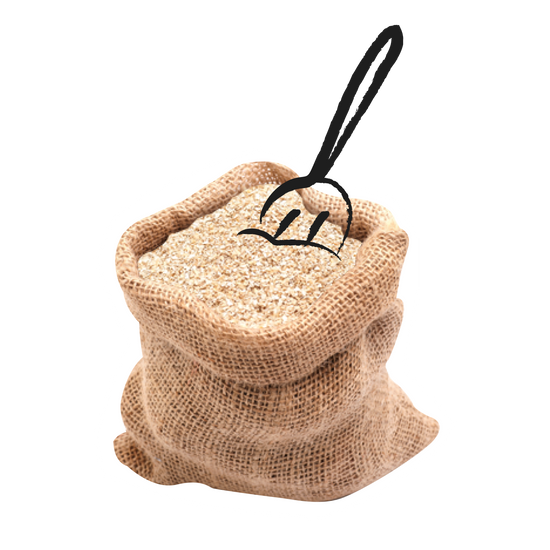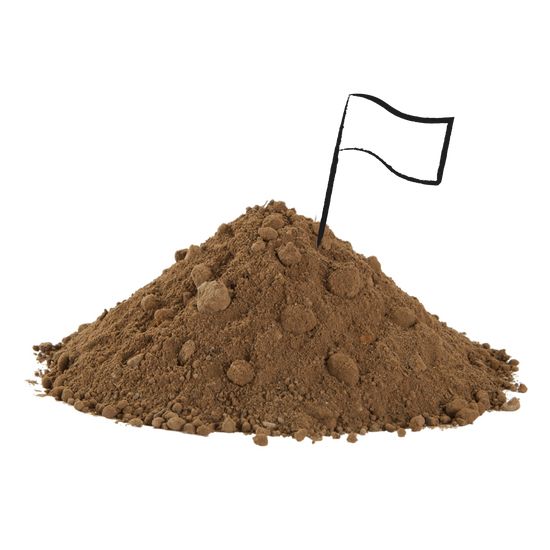The quest for a better protein
A growing 69% of UK flexitarians are searching for the most sustainable animal protein and a complete & digestive protein (vs. plant-based).
-
Rising need for alt. proteins
26% of global emissions come from the food industry, and we'll be 10B people by 2050. The need for sustainable proteins is real. The market is set to reach <$290 billion by 2030. (BCG x Blue Horizon, 2021)
-
Crickets, a new protein to fight climate change
Crickets are the most sustainable animal protein, requiring much less CO2, land, water & feed than any other farmed livestock. Crickets are more complete vs. plant proteins as they contain all essential amino acids. (FAO, 2013)
-
Insects appeal to vegetarians too
Some vegetarians and vegans struggle to have sufficient complete protein in their meals. Both vegetarians and omnivores believe that insect consumption is wise and offers a solution to the world's nutrition problems. (University of Eastern Finland study, 2019)

More on insect protein:
Insects are a complete protein i.e. they contain all 9 essential amino acids (like most meat-based proteins). All plant proteins besides soy and quinoa are incomplete, meaning they miss some essential amino acids, making it harder for your body to digest the protein (causing bloating).
Protein efficiency
Insects are about 48% efficient at converting biomass into protein - that compares to a dairy cow that has about 3% efficiency
Vitamins
B12 Content
Cricket powder: 16.6mcg
Beef: 1.75mcg
Salmon: 3.2mcg
Cheese: 3.1mcg
Eggs: 1.1mcg
Health benefits
Crickets are also high in iron, calcium and zinc

Protein processing:
Animal
Unprocessed as you buy your meat usually raw, directly extracted from the animal
Plant
Somewhat processed as you need to extract the protein from the plants to make protein isolate
Whey
Processed as you need to extract the whey from milk, pasteurise, concentrate and finally isolate the protein
Insect
Unprocessed as you use the insect as whole (fresh or dried) or into powder (milling the dried insects)

Emissions from farming 1kg crickets vs 1kg beef
is equivalent to driving a gasoline car from:
All about sustainability
What it takes to farm crickets vs other proteins
-

1.7kg of feed per 1kg of protein
beef 10kg
pork 5kg
worms 2.6kg
chicken 2.5kg -

23L of water per 1g of protein
beef 112L
pork 57L
chicken 34L
chickpeas 50L -

1g of gas emissions per 1kg of protein
beef 2,850g
pork 1,130g
chicken 300g -

15 m2 of arable land per 1kg of protein
beef 144-258 m2
pork 47-64 m2
chicken 42-52
whey 33-48 m2
How we farm & harvest our crickets
Collapsible content
Where do the crickets come from?
Our crickets are vertically farmed in the EU. We promote vertical farming as part of our business to reduce land, C02, methane and water utilisation for animal-based protein (vs. intense livestock farming).
What does vertical farming mean?
Vertical farming is the practice of growing crops in vertically stacked layers - it's a way of taking the controlled environment of a modern commercial greenhouse to the next level.
By stacking crops vertically on shelves or tall pillars, vertical farming allows approximately 10x the yield for a given land area. The farm will recreate natural environments to promote efficient farming.
What do the crickets eat?
It depends on the farm and/or the environment they are in. Our crickets are fed wholewheat cereals and a blend of veggies (broccoli, lettuce and carrots).
How do you add the crickets in the puffs?
The crickets are simply frozen, dried and ground into a protein powder, which then blends perfectly with the rest of our ingredients.






